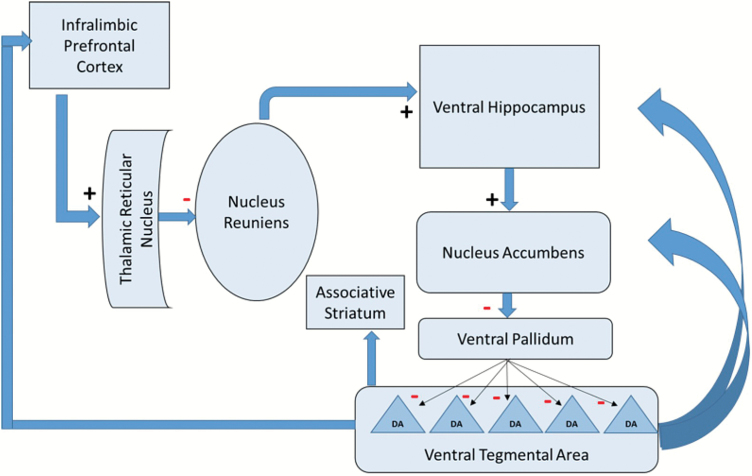Fig. 1.
Circuit model of frontal and hippocampal control of dopamine neuron firing. The ventral hippocampus exerts potent control over dopamine neurons firing spontaneously. The number firing determines the amplitude, and hence salience, of the signal. Dopamine neurons are normally inhibited by the ventral pallidum, which in turn is inhibited by the nucleus accumbens. When the ventral hippocampus is activated, it activates the nucleus accumbens, which in turn inhibits the ventral pallidum and releases dopamine neurons from inhibition, allowing them to initiate firing.55 The ventral hippocampus is potently regulated by the PFC via the thalamus. The (infralimbic) PFC normally holds the ventral hippocampus in a less-active state. However, when infralimbic PFC activity is decreased, the primary effect is deactivation of the reticular nucleus of the thalamus, which in turn disinhibits the thalamic nucleus reuniens. This increases the tonic excitatory drive of the nucleus reuniens on the ventral hippocampus, disinhibiting dopamine firing, which impacts cognitive control via the associative striatum.56 The human analogue of the infralimbic cortex is the subgenual cingulate area 25. The arrows from the VTA to cortical and subcortical regions denote modulatory dopaminergic projections.

